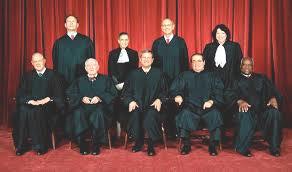
The 6-2 decision by the nation’s highest court, upholding the legality of voter-approved state constitutional amendments, was the underlying issue in a case centered on Michigan voter approval in 2006 of a proposed constitutional amendment, known as Proposition 2.
The amendment, championed by Black California conservative activist Ward Connerley, was approved by 58 percent of citizens voting. It prohibits “affirmative action programs that give preferential treatment to groups or individuals based on race, gender, color, ethnicity or nation origin for public employment, education or contracting purposes.”
The racial prohibition has been enforced by the state since its enactment while the hotly contested issue worked its way through the federal courts. During the time since the 2006 vote, estimates are minority enrollment in Michigan’s state-controlled institutions has been on a steady decline, as has happened in California where a similar amendment was enacted more than a decade ago.
At the three-campus 60,704-student University of Michigan, considered the state’s flagship institution of higher learning, empirical enrollment estimates by several higher education groups suggest the historically small Black and Latino enrollment at the institution has dropped by a third to 50 percent since the state constitution amendment was passed.
Tuesday’s high court decision predictably was praised by states rights advocates and opponents of affirmative action rooted in the Civil Rights decades of the 1950s and ’60s who have argued such practices have created reverse discrimination against Whites.
The ruling was also widely criticized by progressives and leaders of numerous higher education advocacy groups. They cited the ruling as another blow against affirmative action in higher education.















